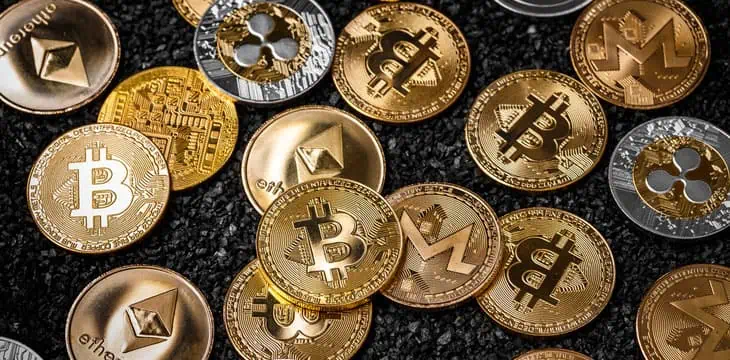|
Getting your Trinity Audio player ready...
|
New York’s financial regulator has finalized tough new rules that will restrict venture capitalists’ ability to profit from worthless memecoin dumps while putting further pressure on Coinbase (NASDAQ: COIN) to delist Tether.
On Wednesday, the New York Department of Financial Services (DFS) issued the final version of its Guidance Regarding Listing of Virtual Currencies for entities approved to operate in New York under the BitLicense program. The finalized rules follow the release of the proposed rule changes in September and the NYDFS request for comments on the same.
The DFS said it received submissions from “VC Entities, industry groups, advisory firms, and the wider public.” VC Entities, in this case, are BitLicensees and state-licensed “limited purpose trust companies engaged in virtual currency business activity.”
The DFS also conducted direct outreach with stakeholders to “socialize proposed requirements and identify areas that could benefit from greater clarity.” These discussions helped identify several “themes” that were incorporated into the final Guidance document.
The digital asset sector has long suffered from a pattern of venture capital groups investing early in projects and, in return, receiving massive amounts of project-specific tokens. The VCs then engage in relentless promotion of projects ahead of token listings on exchanges, allowing them to sell off large quantities of their tokens to the unsuspecting public, who watch the value of these worthless tokens crater shortly thereafter.
Occasionally, this pump-and-dump pattern is made even more egregious because the VC and the exchange are two heads of the same beast, as in the case of the Coinbase exchange and its VC arm, Coinbase Ventures.
Coinbase adopted a ‘first to list’ stance in early 2021, resulting in at least 30 projects in which Coinbase Ventures had invested being listed on the exchange. Like most projects with dubious utility, many of these tokens are now effectively worthless. Coinbase’s board of directors also features a who’s who of VC tech giants holding major bags who help influence which tokens appear on Coinbase.
The finalized DFS Guidance aims to protect unsuspecting ‘crypto’ minnows by “making virtual currencies that exhibit certain characteristics impermissible for self-certification for any virtual currency business activity available to retail consumers.”
VC Entities must now submit for approval “a coin-listing policy that meets the [new] standards.” VC directors or an equivalent ‘governing authority’ must also “ensure the robustness of the governance, monitoring, and oversight framework” of their coin-listing policy.
A governing authority must be “independent from those responsible for making the initial recommendations whether to list or delist a coin,” and any actual or potential conflicts of interest must be “assessed, effectively addressed, and fully disclosed to the public.”
VC Entities must also perform “a comprehensive risk assessment” for each coin they hope to list. This assessment must focus on elements such as technology risk, operational risk, cybersecurity risk, legal risk, reputational risk, and regulatory risk.
There are also concerns over market and liquidity risks, including whether there is “a concentration of coin holdings or control by a small number of individuals or entities.” And then there’s illicit finance risk, requiring an assessment of a coin’s “historical or potential use in facilitating illicit financial activity or potential sanctions evasion, and must ensure that mitigating controls are in place.”
On this last point, the DFS is clear: “If a coin is designed or substantially used to circumvent laws and regulations, or has features designed to facilitate the obfuscation or concealment of the identity of an individual or entity, it cannot be self-certified.” (More on this later.)
Cease & delist
There are also new rules for delisting coins, which the DFS notes could occur for various reasons, including if a governing authority concludes that a listed token suddenly starts “presenting newly elevated risk.” However, the governing authority must keep records of its delisting deliberations and provide the DFS with “the rationale and all elements of the proposed delisting timeline,” as well as “the broader operational processes supporting that decision.”
While the Guidance cites potential reasons for delisting that include “a change in the legal or regulatory environment that makes support for a coin no longer permissible or practical,” it doesn’t specify whether NY-licensed exchanges could delist a token for anti-competitive reasons similar to what the BSV token endured at the hands of multiple exchanges starting in 2019.
Regardless, all VC Entities are required to meet with the DFS by December 8 to preview their delisting policies, and the final policies must be submitted to the DFS for approval by January 31, 2024.
Bolting the stable door
Specific categories of tokens that DFS-approved companies are explicitly prohibited from self-certifying include exchange coins like Binance’s BNB or FTX’s FTT. This would presumably spell problems for Coinbase should it ever drop its façade of disinterest and issue a bespoke token on its proprietary Ethereum-based ‘Layer 2’ blockchain Base.
Tokens bridged from other chains are also off-limits, which could spell trouble for
Circle’s USDC stablecoin, which made its debut on Base as a bridged version from Ethereum (although it’s also now available on Base in native form).
Speaking of stables, the ‘thou shalt not self-certify’ category also includes “any stablecoin
that is not included on the Greenlist,” an extremely short list of tokens that meet the DFS’s standards and can thus be offered to the public without requiring further approval.
Not so long ago, the Greenlist included tokens such as BUSD, BCH, LTC, XRP, and more. At present, only BTC, ETH, and a few stablecoins—GUSD, GYEN, ZUSD, PAXG, USDP, and PYUSD—remain on this increasingly exclusive list.
The new Guidance will put additional pressure on Coinbase to delist Tether’s USDT
stablecoin. Coinbase listed USDT in May 2021 but blocked its New York-based customers from trading USDT on the platform, which would seem to comply with its BitLicensee obligations. (Kraken, another USDT-friendly U.S. exchange, decided to halt all operations in New York in 2015 rather than comply with the BitLicense regime.)
Still, USDT hoists all the red flags in the ‘illicit finance risk’ assessment process described above, so much so that Tether is getting called out by name in the halls of Congress for USDT’s ongoing popularity with Islamic terror groups. The question now is whether Coinbase will feel sufficient shame at the perception that it’s validating Tether’s disdain for the law by continuing to offer it to U.S. customers outside New York.
Coinbase’s Q3 earnings report showed USDT accounting for 15% of all trades in the three months ending September 30, an inconvenient truth Coinbase attempted to justify by claiming this was an industry-wide ‘temporary’ elevation.
But now, halfway through Q4, Coinbase’s top trading pairs feature USDT/USD in second place with just over 15% of total volume, while USDT’s other pairs on the exchange add another roughly 3% to that total. (And that’s without New York’s 20 million residents having USDT as a trading option.) So much for ‘temporary.’
Given Coinbase’s traditionally antagonistic stance toward anything or anyone attempting to limit what it can or cannot list on its platform—and the fact that it hasn’t turned a profit in nearly two years—CEO Brian Armstrong appears unlikely to forego the opportunity to generate revenue and controversy at the same time. It’s too bad for shareholders that he’s much better at generating the latter than the former.
Circling the drain
Also notably absent from the Greenlist is USDC. Despite the Boston-based Circle being the first-ever recipient of a BitLicense back in September 2015, USDC has never made the DFS Greenlist.
It’s not that Circle and DFS don’t talk. In fact, Circle was credited with tipping off DFS due to the fact that Binance was issuing its own unbacked version of BUSD (Binance-PEG BUSD) independent of the actual BUSD issued by the DFS-approved Paxos Trust. That tip led DFS to order Paxos to halt further issuance of BUSD in February. The stablecoin’s market cap promptly fell from over $16 billion to less than $2 billion today.
It’s perhaps worth noting the disclaimer at the bottom of the Greenlist that “DFS may, at any time and in its sole discretion, prohibit or otherwise limit a coin’s use before or after a VC Entity begins using a coin; require that any VC Entity delist, halt, or otherwise limit or curtail activity with respect to any coin.”
Then again, given the alarming rate with which Tether whales are cashing out their USDT for USDC, Circle may not be a going concern by this time next year. So perhaps the DFS just thinks USDC belongs not on a Greenlist, but a sick list.
Follow CoinGeek’s Crypto Crime Cartel series, which delves into the stream of groups—from BitMEX to Binance, Bitcoin.com, Blockstream, ShapeShift, Coinbase, Ripple,
Ethereum, FTX and Tether—who have co-opted the digital asset revolution and turned the industry into a minefield for naïve (and even experienced) players in the market.

 09-14-2025
09-14-2025 





